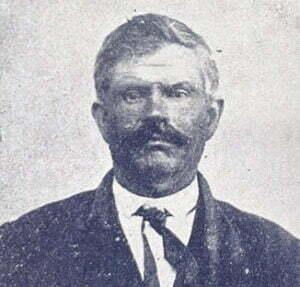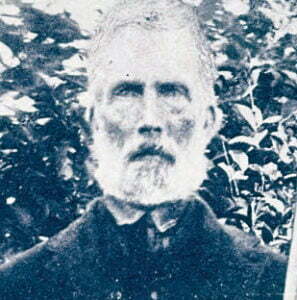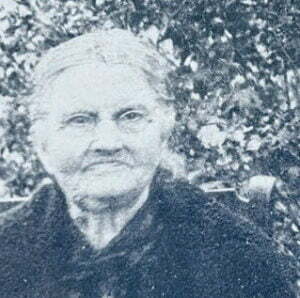What did the first white settlers find when they moved to northwestern Rockingham County in the 1740s and ‘50s? How was their landscape different from today?
The writings of Joseph Doddridge (1769-1826) give some insight about what our ancestors found when they came here. In 1773, Doddridge moved to western Pennsylvania when it was still an Allegheny mountain wilderness, much like Brocks Gap had been thirty years earlier. In fact, some Brocks Gap families like Uriah Humble moved to western Pennsylvania in the 1770s. Those pioneer families in western PA and Brocks Gap saw similar terrain and wildlife since it was the same mountain range.
Doddridge wrote of animals which were common when he was a youngster but completely disappeared or reduced in number when he wrote in 1824. For instance, buffalo, elk, panthers, and wild cats were common in western Pennsylvania but had entirely disappeared. Bear and deer had become scarce. Wolves, which had been destructive to cattle, were seldom found by 1824. He felt that rabies or hydrophobia had killed more wolves than hunters or wolf scalp bounties paid by governments.
In early mountain settlements, black and gray squirrels ate large quantities of corn in the fields before harvest, Doddridge wrote. After a few years there were so many squirrels that they threatened entire crops of food. He noted a strange phenomenon: “As if by common consent, they commence an emigration from west to east, crossing the river in countless numbers. At the commencement of their march, they are very fat, and furnish an agreeable article of diet; but towards its conclusion they become sickly and poor, with large worms attached to their skins. After this emigration they are scarce for some years, then multiply, emigrate, and perish as before.”
A Brocks Gap hunter may have witnessed a squirrel emigration. An article in the October 18, 1877, Rockingham Register said: “A few days since a gentleman in Brock’s Gap went out squirrel hunting, and taking his seat upon a log, killed one hundred squirrels without moving from the spot. He says at least five hundred more passed by where he was sitting during the day. It was not a first-class day for squirrels, either. They all seemed running eastward.” A hunter’s tall tale or a squirrel emigration? I wonder.
Squirrels and small game provided food and cash for Brocks Gap hunters. In 1877, Cootes Store merchants shipped to market 240 squirrels, 600 rabbits, 35 pheasants and 81 partridges plus deerskins and opossum, coon, fox, and wildcat furs.
The Custer family moved to Brocks Gap in the 1750s, and Dr. John Wayland recorded some of their stories in A History of Rockingham County Virginia. Paul Custer (1730-1820) once shot a buffalo at one of the salt licks in the adjacent mountains. His great-grandson Jacob Custer (1817-1892) was born in Brocks Gap but moved to McLean County, Illinois in 1852. Jacob owned 400 acres of land near the Pendleton Mountain. Most of it “was covered with a fine growth of pine and poplar timber. Some of the trees were over a hundred feet high, and logs 60 feet long and entirely clear of limbs were cut from many of them.”
Jacob was a mighty hunter who loved to tell his Illinois neighbors about his exploits in his early days in the mountains of Old Virginia. “Each fall, during the hunting season, Mr. Custer would kill from fifteen to twenty deer. His family was always well supplied with venison. Many times, he would return from a hunting trip with a deer weighing upwards of 175 pounds slung over his shoulders. He was very stoutly built, and in his younger days was a man of great physical endurance. He and his neighbors would frequently take their rifles and hunting dogs, and “run” deer on Pendleton Mountain. This mountain was then covered with heavy timber and was a favorite haunt of wild animals.”

Other families had skilled hunters. Wayland wrote, “In January 1870, William Minnick of Broadway reported that he had been in at the death of no less than 33 deer in the mountains of Brock’s Gap and Rawley Springs during the past season, October 1 to January 1.” Rockingham County hunter Frederick Keister was said to have killed 1,000 deer in his lifetime. John Fulk (1814-1871) moved his family to his father’s log cabin on the Shenandoah Mountain where he could stand at the door and kill both bear and deer. He and his son killed about 25 to 40 deer and several bear every year. “The sides and ends of the house were completely covered from the roof to the ground with horns until there was no room for more. Some of them were of immense size,” wrote visitor Lt. John Blue in 1862.


Amanda Custer Hess (1829-1921), sister of Jacob and Berryman. She and her husband Abraham Hess owned the Richard Custer homestead on Dry River Road.
































